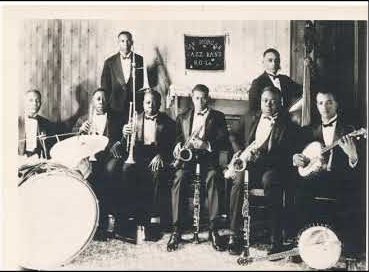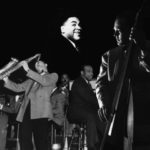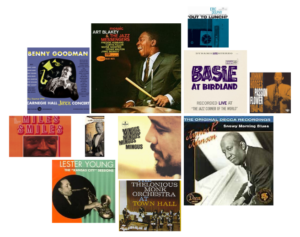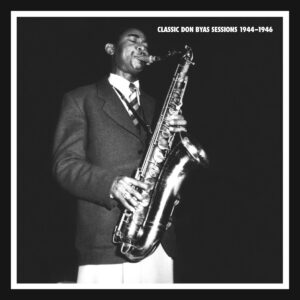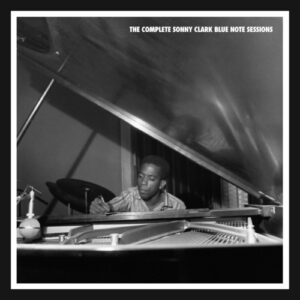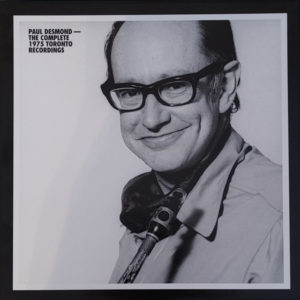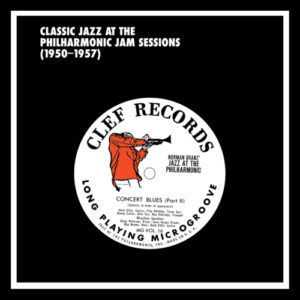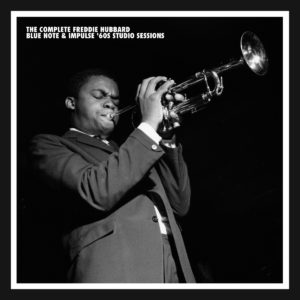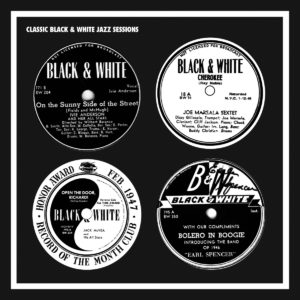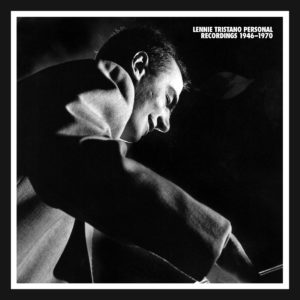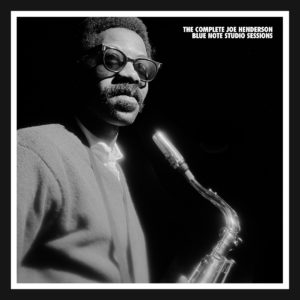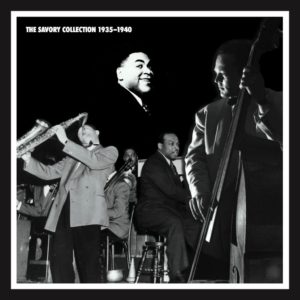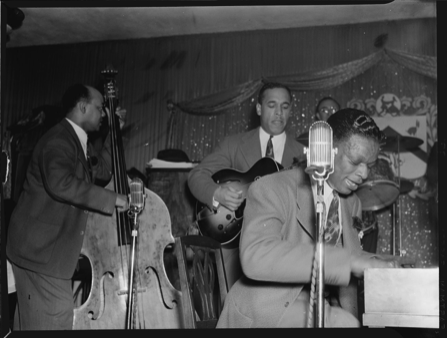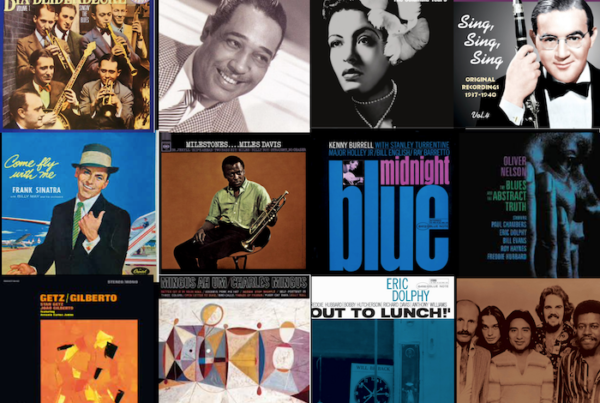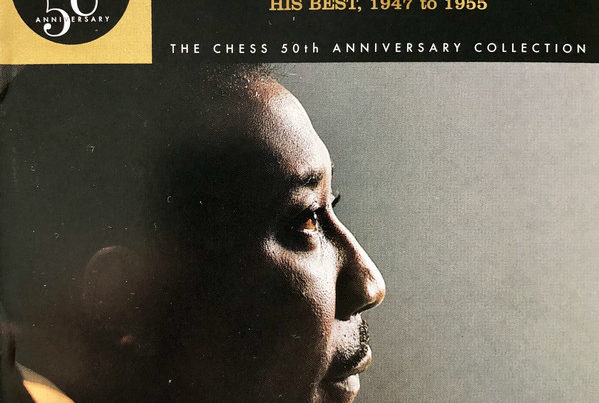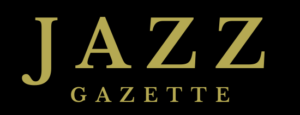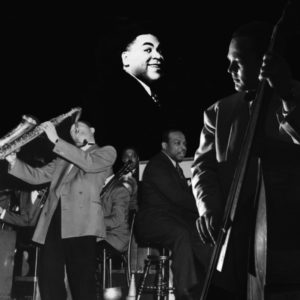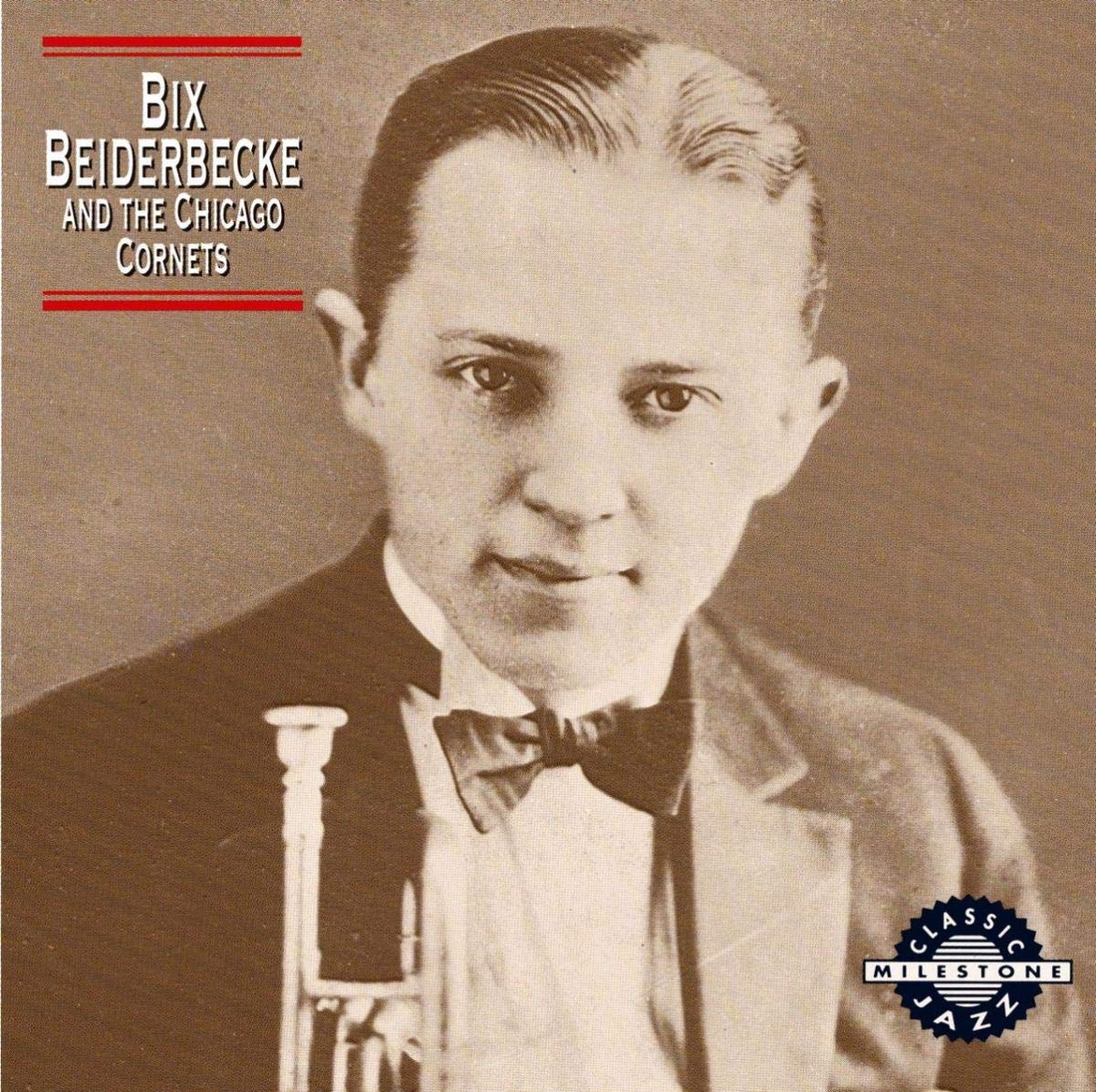
Dixieland/Early Jazz
Traditional New Orleans Dixieland jazz has always been a mystery to some and a revelation to others.
Dixieland/Early Jazz
Traditional New Orleans Dixieland jazz has always been a mystery to some and a revelation to others. Even at home, the range of opinion has traditionally fluctuated wildly from animosity to diffidence to chauvinism. Thus, on June 20, 1918 the New Orleans Times-Picayune ran an editorial titled “Jass and Jassism” that condemned the new music in no uncertain terms, urging the local population “to be the last to accept the atrocity in polite society” and to “make it a point of civic honor to suppress it.”
Letters to the editor over the next two weeks made it clear that many Orleanians were willing to defend jazz at this early date as “the typical American music–the true music of the hustler” or merely as “a style of playing” and resented being dictated to by “an ignoramus.”
Advertisements by Maison Blanche for the first jazz recordings in 1917 had already established the middle ground on the issue, that jazz was, simply, New Orleans dance music: “Here is positively the greatest dance record ever issued. Made by New Orleans musicians for New Orleans people, it has all the ‘swing’ and ‘pep’ and ‘spirit’ that is so characteristic of the bands whose names are a by-word at New Orleans dances.” [New Orleans Times-Picayune, April 15, 1917]
Long after homegrown heroes such as Jelly Roll Morton, Sidney Bechet, King Oliver, Edward Ory, or Louis Armstrong had hit the road in search of greener pastures, revolutionizing American popular music in the process, generations of dancers back in New Orleans continued to respond to jazz less as an art form and more as a necessary part of the fabric of daily life–a functional music for parades, fish fries and banquettes, church openings, Carnival and debutante balls, taxi dance halls, ball games, and funerals. Music did not “dry up” in New Orleans after the departure of Louis Armstrong in 1922 (as is often presumed) but instead continued to develop and evolve within its indigenous cultural context.
Thus, while New Orleans superstars apotheosized the New Orleans style in classic recordings made in Chicago and New York in the 1920’s–what most “hot” collectors referred to when they talked about authentic jazz–many of the elements which were essential to the homegrown variant remained invisible to the national jazz music constituency of the period.
In particular, the city’s unique brass band heritage, replete with its “second line,” and the Creole dance hall repertoire were left behind, presumably because record company officials saw no commercial potential in these genres at the time. Then, as now, New Orleans artists were forced by market imperatives to adapt to mainstream tastes rather than to expect most Americans to understand or appreciate New Orleans music on its own terms. It was simply too quirky.
In New Orleans dance halls, however, the quirks reigned supreme and infiltrated even the upper echelons of society in the period 1915-1925, working from the bottom up. Trombonist William “Baba” Ridgley of the Original Tuxedo Jazz Orchestra recalled the change in fortunes which occurred in these years for his band members: the usual sideman’s rate of $1.50 a night plus tips at the Tuxedo Dance Hall in Storyville was dramatically transformed once the band actually started wearing tuxedos.
The new image led to work at the Southern Yacht Club and at debutante and Carnival balls where the musicians earned $25 nightly by 1925. Teenagers who caught Kid Ory’s Creole Band or Armand Piron at subscription dances at the Tulane University Gymnasium in the prewar years were easily hooked and relied on similar outfits as young adults for their social functions throughout the 1920’s, creating a nostalgic bond that would become important in later years when the music they loved was faced with extinction. – Bruce Boyd Raeburn, Ph.D., Curator Hogan Jazz Archive, Tulane University, liner note excerpt The Atlantic Jazz Sessions (Mosaic Records)
ALBERT AMMONS & MEADE LUX LEWIS
FIRST DAY
Eighteen solos and duets from the masters of boogie woogie piano. Blue Note’s first recording session, January 6, 1939. Includes all 19 songs from Blue Note’s first recording session: 8 piano solos from Meade Lux Lewis, 9 from Albert Ammons and 2 duets.
ALBERT AMMONS
BOOGIE WOOGIE STOMP
Fourteen songs from the 1939 radio broadcasts from Chicago’s Hotel Sherman by Albert Ammons, several with Meade Lux Lewis and Pete Johnson added. Four more sides come from a late `38 private recording. The boogie woogie masters at their peak.
LOUIS ARMSTRONG
WITH KING OLIVER
Oliver’s 18 landmark 1920s jazz recordings on Gennett Louis Armstrong, Lil Hardin, Johnny Dodds and Baby Dodds, as well as 7 Gennett/ Paramount tunes by the Red Onion Jazz Babies with Louis.
LOUIS ARMSTRONG
COMPLETE HOT 5’S & 7S
The most important jazz recordings ever made. All 80 tracks by Louis’ Hot Five and Hot Seven (1925-28) with Johnny Dodds, Kid Ory, Lil Armstrong and Earl Hines,, including all known alternate takes plus 9 tracks of the band backing other vocalists. Newly transferred and pitch corrected.
LOUIS ARMSTRONG
PLAYS W.C. HANDY
Louis and the All-Stars with Barney Bigard and Trummy Young pay tribute to Handy with some of his finest compositions on this 1954 session. Bonus tracks (#12-16) include rehearsal sequences for three tunes, showing how the All-Stars developed their performances. a monologue from Armstrong and George Avakian interviewing Handy.
LOUIS ARMSTRONG
SATCH PLAYS FAT
A wonderful 1955 All-Stars date of Waller classics, with Barney Bigard and Trummy Young in the front line. The CD includes four alternate takes and 7 Okeh Louis performances of Fats tunes from 1928-32 tranferred by John R.T. Davies.
LOUIS ARMSTRONG
SATCHMO THE GREAT
The soundtrack album to Edward R. Murrow’s TV documentary with plenty of music by the All-Stars in 1955-56 as well as Louis performing “St. Louis Blues” with a symphony and “Sly Mongoose” with African musicians. Three bonus tracks have been added to the original LP.
LOUIS ARMSTRONG & DUKE ELLINGTON
FIRST TIME
The first album to come out of this historic April 1961 encounter between the two most influential men in jazz. The program is all-Ellington, and Duke’s piano playing shines, supporting Armstrong’s vocals and trumpet magnificently. Louis’ all stars – Trummy Young (trombone), Barney Bigard (clarinet), Mort Herbert (bass), Danny Barcelona (drums)- complete the band.
SIDNEY BECHET
BEST OF BLUE NOTE YEARS
Eighteen of Bechet’s greatest performances from “Summertime” to “Black And Blue” with such sidemen as Wild Bill Davison, Albert Nicholas, Art Hodes, Joe Sullivan, Pops Foster and Big Sid Catlett.
SIDNEY BECHET/BUNK JOHNSON/PETER BOCAGE
NOCTURNE 1
The first in a series of jazz music CDs originally broadcast from the Savoy Caf‚ in Boston at the dawn of the trad. revival in 1945 and featuring three of that music’s initial practitioners. While Bechet is present on all tracks, Johnson is heard on the first 9 tracks at a rehearsal for the show while Bocage is on the remaining 7, which is a complete broadcast over WCOP in Boston.
SIDNEY BECHET
FABULOUS SIDNEY BECHET
Sidney Bechet stood beside Louis Armstrong as one of the most innovative and versatile artists in New Orleans jazz. The soprano saxophonist did some of his finest work on Blue Note. His two final sessions for the label in 1951 and ’53 feature the great trumpeters Sidney De Paris and Jonah Jones and trombonist Jimmy Archey in a program of music that focuses on the great New Orleans jazz recordings.
SIDNEY BECHET
THE LEGENDARY
A well-chosen 22-tune overview of Bechet’s RCA recordings (1932-41) which includes sideman appearances with Jelly Roll Morton (“High Society”), Tommy Ladnier (“Weary Blues” and “Really The Blues”) and a wealth of material by his own New Orleans Footwarmers. Others jazz artists include Red Allen, Sidney DeParis, Albert Nicholas, Rex Stewart, Willie “The Lion” Smith, Earl Hines, Sid Catlett and Zutty Singleton. His revolutionary 1941 overdub session on which he played all the instruments dubbing from one lacquer to another is represented by “The Sheik Of Araby”.
BIX BEIDERBECKE
CHICAGO CORNETS
Twenty-eight Gennett recordings, including all 15 Bix sides with The Wolverines, four others by Bix, and Muggsy Spanier’s Bucktown Five recordings, all from 1924-25.
WILD BILL DAVISON
PRETTY WILD/WITH STRING
These two, long unavailable Columbia albums of the late 50s showcase the raw beauty and power that was Wild Bill backed by strings. 24 remarkable tracks in all.
WILD BILL DAVISON
THIS IS JAZZ
Twenty-one outstanding performances by Wild Bill from Rudi Blesh’s 1947 radio show “This Is Jazz” and originally issued as 78s on Circle Records. The superb band is Jimmy Archey on trombone, Albert Nicolas or Edmond Hall on clarinet, Ralph Sutton or James P. Johnson on piano, Danny Barker on guitar, Pops Foster on bass and Baby Dodds on drums.
WILBER DEPARIS
EVENING AT JIMMY RYAN
Rare live broadcast material from 1951-1952 with Wilbur and Sidney DeParis and clarinet legend Omer Simeon in great form. Equally rare bonus tracks from a mid-’50s CBS television appearance bring this essential CD to 65 minutes.
WILBUR DEPARIS
PLAYS SOMETHING OLD/THA
Two classic DeParis albums with a generous mix of standard New Orleans fare, DeParis originals and unexpected arrangements of “Colonel Bogey’s March”, “In A Persian Market” and “Somebody Stole My Gal”. Sidemen include brother Sidney DeParis, Omer Simeon, Lee Blair and the underrated Sonny White at the piano. Please note that on “That’s A Plenty” the sound quality is inferior to the original LP but is still sonically acceptable.
WILBUR DEPARIS
UPROARING TWENTIES 2
This set combines an excellent overview album of De Paris’s Atlantic years (“The Uproarious Twenties” – CD 1 #1-9)with an early 1952 binaural session (CD 1- #10-14) and his first 12″ LP in 1955 (“Wilbur DeParis And his NEW New Orleans Jazz” – CD 2). The frontline of Wilbur on trombone, brother Sidney on trumpet and Omer Simeon on clarinet is powerful throughout.
BENNY GOODMAN & JACK TEAGARDEN
BG & BIG TEA
Twenty-one hot sides that provide a rare glimpse of these giants at a time when they were much sought after as sidemen for radio and recordings. They appear together on sessions by Red Nichols (`29-`30), Irving Mills’ Gang with Bix Beiderbecke (`30), Joe Venuti and Eddie Lang (`31) and Adrian Rollini (`34).
ERSKINE HAWKINS
TUXEDO JUNCTION
Eleven essential Victor and Bluebird recordings from “The 20th Century Gabriel” whose band was a regular at the Savoy Ballroom. Along with the leader, Wilbur Bascomb, Julian Dash, Heywood Henry and Avery Parrish are the featured soloists on such hits as “After Hours”, “Tippin’ In” and the title track.
FLETCHER HENDERSON
TIDAL WAVE
This collection gathers the 8 tracks for Brunswick in 1931 with the Connie’s Inn orchestra with Hawkins, Stewart, Russell Procope and Benny Morton and the 13 sides for Decca in 1934 with Ben Webster, Benny Carter and Henry Allen among the jazz musicians on hand
EARL HINES
A MONDAY DATE
This live 1961 sextet recording from The Birdhouse in Chicago with Eddie Smith, Jimmy Archey, Darnell Howard, Pops Foster and Earl Watkins revisits such classics as “West End Blues,” “Caution Blues” and “Clarinet Marmarade” with Hines in superb form.
BUNK JOHNSON
LAST TESTAMENT
The first recordings by this New Orleans trumpet pioneer after his rediscovery in 1942. Featured are clarinetist George Lewis and trombonist Jim Robinson.
1920s Jazz
New Orleans – New York – Europe
At the very dawn of jazz recording, with echoes of the Original Dixieland Jazz Band still in the air, very few musicians were able to capture a fresh new sound until the flood gates opened with the blossoming of Louis Armstrong. It was the powerful virtuosic display of Louis Armstrong that made the Roaring 20s the era of “hot jazz”.
BUCK JOHNSON
BUNK & LOUIS
Eight selections come from a 1946 New York session with Don Ewell’s piano and Alphonse Steele’s drums as the only accompaniment. Twelve New Orleans tracks include Geroge Lewis, Jim Robinson, Lawrence Marrerro, Alcide “Slow Drag” Pavageau and Baby Dodds.The legendary trumpeter interprets these pop songs of varying vintage witn lusty tone and powerful drive.
BUCK JOHNSON
KING OF THE BLUES
Bunk’s 1944 recordings with his own band (George Lewis, Jim Robinson, Lawrence Marrero, Alcide Pavageau and Baby Dodds) are original New Orleans ensemble jazz at its purist and finest. This CD features their take on some of the most famous tunes in the N.O. repertoire.
LONNIE JOHNSON
BLUES & BALLADS
Lonnie Johnson’s contributions span back to the ’20s on his own Okeh sessions and recordings wtih Eddie Lang and Louis Armstrong. Johnson teams up with guitarist Elmer Snowden and bassist Wendell Marshall and the room fills with history on this 1960 session.
PETE JOHNSON
CENTRAL AVE. BOOGIE
Boogie woogie piano master Pete Johnson’s 1947 Apollo sessions with Al McKibbon, J. C. Heard and others. Includes 3 boogies with the classic piano-guitar-bass instrumentation.
JELLY ROLL MORTON
BIRTH OF THE HOT
(The Classic Chicago Red Hot Peppers, 1926-27) All 19 master takes and 4 alternate takes by Jelly Roll Morton’s Red Hot Peppers recorded in Chicago for Victor between September 1926 and June 1927. Kid Ory, Omer Simeon, Barney Bigard and Johnny And Baby Dodds are among the sidemen on these enormously influential recordings. Tunes include “Grandpa’s Spells,” “Black Bottom Stomp,” “Doctor Jazz,” “Beale Street Blues” and “The Pearls.”
JELLY ROLL MORTON
JELLY ROLL MORTON 1923-1926
Twenty-four solo and band classics from the Paramount and Gennett labels plus the 2 King Oliver-Morton duets from Autograph. Includes the first commercial recordings of “King Porter Stomp,” “Grandpa’s Spells,” “The Pearls” and more.
JELLY ROLL MORTON
LAST SESSION
The 13 solos and 12 Hot Six/Hot Seven sides that Jelly Roll Morton recorded for General in December ’39 and January `40. Sidemen include Henry Red Allen, Albert Nicholas and Zutty Singleton.
JELLY ROLL MORTON
LIBRARY OF CONGRESS RECORDINGS
The 1938 recordings of Jelly Roll Morton singing, playing and telling stories was the first recorded jazz oral history. All of the acetates made by Alan Lomax have been newly transferred and are contained in the first 7 discs of the boxed set. The final disc features interviews that Lomax made in 1949 with key players from the early New Orleans scene. The set includes an 80-page booklet with an appreciation by John Szwed and many rare photographs.
NEW ORLEANS RHYTHM KINGS
Twenty-seven Gennett sides by this historic group with George Brunies and Leon Ropollo from 1922-23. Jelly Roll Morton is featured on 8 tunes.
RED NICHOLS & HIS FIVE PENNIES
VOLUME 1
These joyous, swinging 1949 Lang-Worth Trascription recordings ignited the successful comeback of this powerful and inventive cornetist. Trombonist Kingsley Jackson, clarinetist Reuel Lynch, pianist Bobby Hammack, bass saxophonist Joe Rushton and drummer Rollie Culver are the Five Pennies.
KING OLIVER
COMPLETE 1923 RECORDINGS
The King Oliver Creole Jazz Band recordings of 1923 with Louis Armstrong are, without question, among the most historic and musically important jazz recordings of the 20th Century. With this Archeophone 2 CD release all 37 issued titles from the Gennett, OKeh and Columbia labels are included and through the painstaking work by restoration specialist Doug Benson, these classics have never been heard in better sound due to a world-wide canvas of the original 78s. As noted in the Archeophone web site, “”The Oliver ensemble has never been heard to better advantage. Passages long accepted as muddy and indistinct pour forth with unprecedented clarity.”
KID ORY
CREOLE JAZZ BAND 44/45
Sixteen of New Orleans trombone pioneer Kid Ory’s comeback recordings from the Crescent label in `44 and `45. Personnel includes Mutt Carey on trumpet, Omer Simeon or Darnell Howard on clarinet, Buster Wilson on piano, Bud Scott on guitar and banjo, Ed Garland on bass and Alton Redd or Minor Hall on drums.
KID ORY
CREOLE JAZZ BAND 1954
This excellent band with trumpeter Alvin Alcorn, clarinetist George Probert, pianist Don Ewell, guitarist Bill Newman, bassist Ed Garland and drummer Minor Hall approach nine New Orleans classics (including Ory’s “Muskrat Ramble”) with verve, style and precision.
KID ORY
FAVORITES!
This generous CD contains most of a 1956 double album by Ory, trumpeter Alvin Alcorn, clarinetist Phil Gomez, pianist Cedric Haywood, guitarist Julian Davidson, bassist Wellman Braud and drummer Minor Hall on which they magnificently reassess 17 Dixieland jazz tunes and blues. Considered one of Ory’s best from any era.
BILLIE & DEDE PIERCE
GULF COAST BLUES
The Pierces (Billie on paino and vocals and De De on trumpet and vocals) were a regular fixture at Preservation Hall. This album, recorded in New Orleans in 1959, features them with washboard accompaniment on 12 familiar traditional melodies like “Eh La Bas”, “Peanut Vendor” and “Panama” and Billie’s oroginal “Gulf Coast Blues”. Prime examples of traditional New Orleans jazz by two unique and exceptional talents. Three Billie Pierce solos, recorded for Erwin Helfer’s Tone label, have been added to the original album.
LUCKEY ROBERTS & WILLIE “THE LION” SMITH
HARLEM PIANO
At this 1958 session, these two great Harlem pianists and composers each recorded six solo pieces. The paucity of available Roberts material makes this set especially valuable. Roberts plays the first six selections followed by The Lion.
JIM ROBINSON
ECONOMY HALL
A New Orleans presence since the ’20s, Jim Robinson is best known for his years in the Bunk Johnson and George Lewis bands.
Robinson was known for his deep, wide-toned, robust tailgate style of trombone playing. This August 22, 1965 session, recorded at Preservation Hall, features Johnny Wiggs, cornet; Raymond Burke, clarinet; Bob Greene, piano; Allan Jaffe, tuba; Yoichi Kimura, drums.
JABBO SMITH
HOT JAZZ VOLUME 1
This fabled trumpeter is one of the most overlooked jazz musicians of the 20th century! These are the earliest recordings by this powerful, imaginative trumpeter, and it’s hard to imagine he was only in his early twenties when he made them for Brunswick label under his own name and for the bands of Ikey Robinson and Charlie Johnson.
ELMER SNOWDEN
HARLEM BANJO
This historic figure is backed by Cliff Jackson’s trio with Tommy Bryant and Jimmy Crawford for this 1960 session that focuses on great early jazz tunes and ’20s standards.
FATS WALLER
LOW DOWN PAPA
These rare QRS Waller rolls from 1923 to 1931 are prime examples of just how great a pianist he was even at this early stage of his career. This CD includes “I’m Crazy `Bout My Baby”, “Papa Better Watch Your Step” and 2 previously unreleased rolls “Haitian Blues” and the long sought-after duet with James P. Johnson “Cryin’ For My Used To Be”.
WALLER
HANDFUL OF KEYS
22 great live performances from 1938 broadcasts recorded by RCA. Waller’s energetic piano, rockin’ rhythms and sense of humor sound as fresh today as ever. And the band with Gene Cedric, Herman Autrey, Al Casey, Cedric Walace and Slick Jones is hot as always. Tracks 1-14 were broadcast live from NBC Studios on July 5, 1938. Tracks 15-22 were braodcast live from the Yacht Club on 52nd Street on October 14, 1938. The sound is superb!
JIMMY YANCEY
CHICAGO PIANO
Pioneer boogie woogie pianist Yancey had an easy, thoughtful and bluesy style. He plays beautifully on this 1951 session, his last. He is accompanied by bassist Israel Crosby. Mama Yancey sings on five of the 14 selections.

